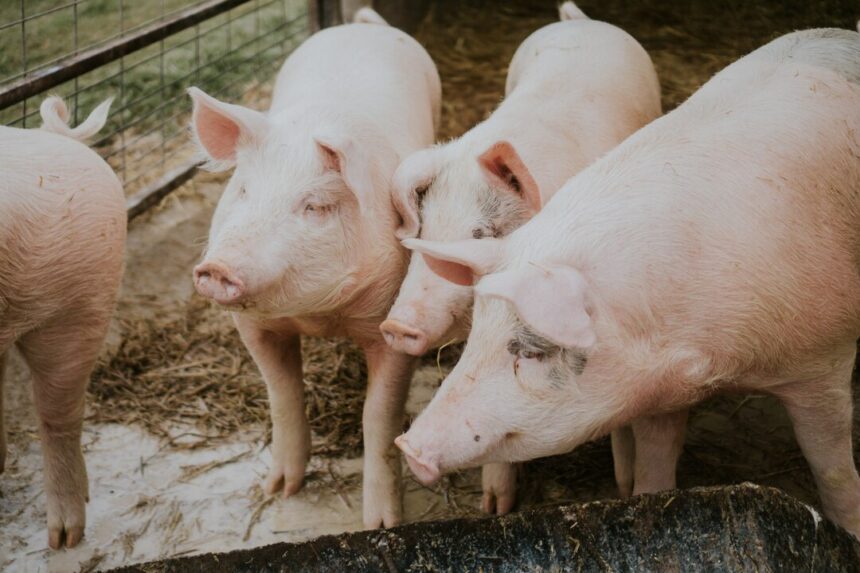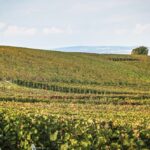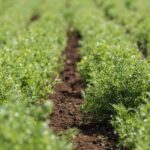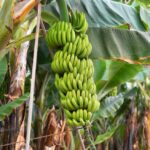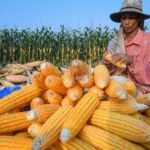Landrace pigs, renowned for their prolificacy, maternal instincts, and efficient feed conversion, have emerged as a popular choice for pig farmers in South Africa. Originating from Denmark, the Landrace breed has adapted well to South African conditions, making it an attractive option for both commercial and small-scale pig farming ventures. Here are ten essential things you should know about breeding and farming Landrace pigs in South Africa:
1. Heritage and Origin:
Landrace pigs originated from Denmark and were selectively bred for their superior maternal traits, prolificacy, and meat quality. Known for their long, lop ears and white, lustrous coats, Landrace pigs quickly gained popularity among pig farmers worldwide.
2. Prolificacy:
One of the primary advantages of breeding Landrace pigs is their exceptional reproductive performance. Landrace sows are renowned for their high fertility rates, large litter sizes, and strong maternal instincts, making them highly sought after for pig farming operations.
3. Maternal Instincts:
Landrace sows are known for their exceptional maternal instincts and nurturing behavior towards their piglets. They exhibit strong maternal instincts, providing attentive care and protection to their offspring from birth to weaning, contributing to higher survival rates and healthier piglets.
4. Growth Rates:
Landrace pigs are prized for their rapid growth rates and efficient feed conversion, making them ideal for meat production purposes. With proper nutrition and management, Landrace pigs can reach market weight at an early age, maximizing profitability for pig farmers.
5. Adaptability to South African Conditions:
Landrace pigs have demonstrated excellent adaptability to South African climates and farming conditions, thriving in a variety of environments ranging from temperate regions to hot and humid climates. Their adaptability makes them suitable for both intensive and extensive pig farming systems.
6. Disease Resistance:
Landrace pigs exhibit robust health and disease resistance, with a lower susceptibility to common swine diseases and parasites. Their hardy constitution reduces the need for intensive veterinary intervention and contributes to lower production costs for pig farmers.
7. Feed Efficiency:
Landrace pigs are known for their efficient feed conversion rates, converting feed into body weight gain with high efficiency. This feed efficiency not only reduces production costs but also minimizes environmental impact by reducing feed waste and nutrient excretion.
8. Carcass Quality:
Landrace pigs produce high-quality carcasses with desirable meat characteristics, including lean muscle mass, fine marbling, and optimal fat distribution. Their meat is prized for its tenderness, juiciness, and flavor, making it a preferred choice for consumers and processors.
9. Breeding Programs:
Effective breeding programs play a crucial role in maximizing the genetic potential of Landrace pigs for desirable traits such as prolificacy, growth rate, and meat quality. Selective breeding, performance testing, and genetic selection techniques are commonly employed to improve herd productivity and quality over successive generations.
10. Market Demand:
There is a strong demand for Landrace pigs in the South African market, driven by the breed’s reputation for superior reproductive performance, growth rates, and meat quality. Pig farmers breeding Landrace pigs stand to benefit from lucrative opportunities in the pork industry, both domestically and internationally.
By understanding the unique characteristics and advantages of Landrace pigs, farmers in South Africa can harness the breed’s potential to enhance their pig farming operations and achieve greater profitability. With their adaptability, prolificacy, and meat quality, Landrace pigs continue to be a valuable asset for the country’s agricultural sector.


